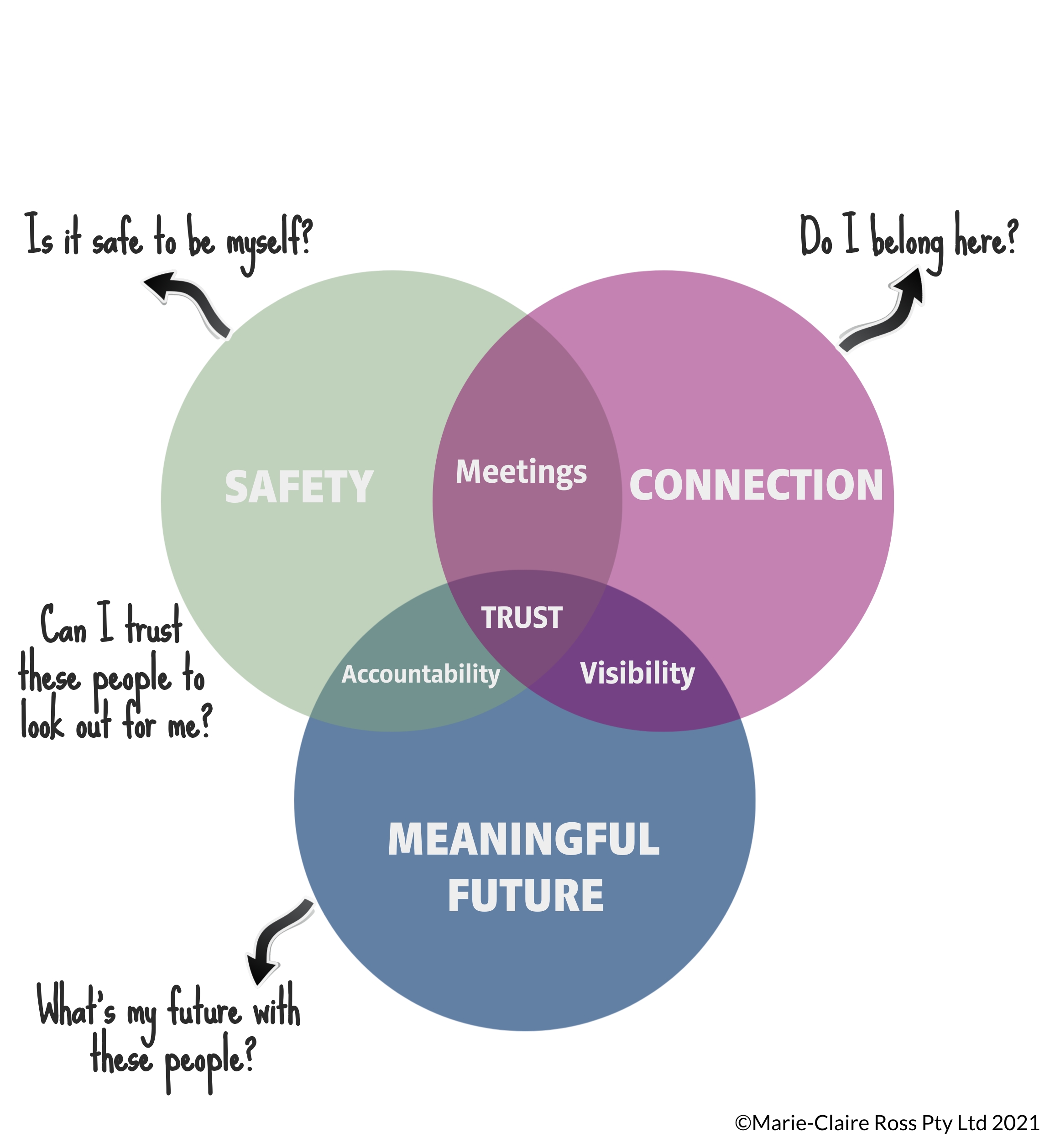
Every single moment our brains are scanning our environment and calculating whether we can trust the people around us. At work, we need to feel confident that speaking...
For many leaders, managing trust in their teams is a challenge because there are three different trust forces at play. These can be either supportive or oppositional.
It's important to understand these main dynamics so we can mitigate the damage that can potentially cause when mismanaged. You can save a lot of time and reduce frustration, when you know what you can control and what you can't.
As you can see below, there are three forces:
-1.jpg?width=3947&name=3-Types-of-Forces-that-Impact-Trust%20(2)-1.jpg)
We send these forces out to people and they send them to us - in either a positive or negative way. Let's unpack this in more detail.
Micro trust forces are critical to our ability to lead. It is underpinned by our level of self-awareness and the realisation that the only person we can really change is ourselves. It means being fully accountable for our results and behaviours rather than blaming others or getting defensive.
At it's core, it's about how much we trust ourselves. This means learning to trust our gut instinct and extending trust out to others. At some level, it requires trusting that everything is going to work out; that we are being looked after by a benevolent force. And trust me, that can be one of the hardest things for a human being to accomplish. But the result is being calm and clear during adversity.
This is the only force we have any real control over and it takes years of dedicated work to master. Micro trust forces impact our ability to manage the subsequent trust forces. You could say the impact of our ability to trust ourselves is like the ebb and flow of the tides. We rise and fall in our leadership depending upon how much we trust and believe in ourselves.
These are trust issues that occur more within the team domain that team leaders have some control over, but still need to navigate to avoid issues.
This requires taking the time to not only build trust with each team member, but encouraging each person to understand one another. In particular, the contribution and role of each person in the team.
One of the biggest issues that impact team trust is how the team leaders managers poor performance and fairness levels.
As difficult as it is for many leaders to have candid performance conversations, trust in their team will always remain below par, until performance and inequity have been acknowledged and dealt with.
Macro forces tend to be either external to the organisation or part of the internal fabric of how work is done overall in an organisation’s architecture.
Savvy leaders understand that their team members crave certainty and look to them for reassurance. Macro forces can easily undo the good work you have done ensuring your team feel unsure about what is going on. It makes it hard to manage the tension between being transparent and predicting the future with meeting leadership obligations.
Macro forces can include external volatility such as pandemics, changes in Government regulations, new competitors or game-changing technologies. Internal changes include new CEO’s, restructures, mergers and acquisitions, new team members and product shifts.
Furthermore, corporate bureaucracy, communication and uncollaborative leaders can often make it appear the organisation doesn't care about employees. It becomes a challenge for leaders who are tasked with inspiring their team to commit to the company vision when corporate information and top leaders demonstrates a lack of caring for people.
Ultimately, we have little control of what will transpire. Things change so fast. But the more we can trust - ourselves, each other and the big vision, the more we can navigate the challenges ahead.
You can learn more in Chapter 3 of TRUSTED TO THRIVE:How Leaders create accountable and connected teams.
You can also register to attend the Book launch party, to learn more about the book, interact with others and win some prizes.

Every single moment our brains are scanning our environment and calculating whether we can trust the people around us. At work, we need to feel confident that speaking...
.jpg)
Have you ever started a new job or worked with a new team and realised that you needed to build trust quickly?
Building trust and managing it long term, is one of the...